It was a dramatic year for science, one that witnessed a severe outbreak of Ebola in West Africa and an historic mission to land a space probe on a comet.
On the home front, science-related discoveries and developments grabbed headlines with animal testing for ‘legal highs’, 1080 use to tackle increased pest numbers and court action over genetically modified organisms among the most-covered stories.
The Science Media Centre has taken a moment to reflect back on some of the biggest science news stories from here and around the world over the last 12 months. Contact the SMC for more information on any of the stories outlined, or to speak to an expert who can put them in perspective.
Our picks: Top 10 New Zealand science stories of the year (in no particular order):
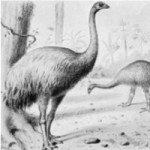 No more moa
No more moa
When did the last moa die? This question was the focus of not one but two research papers published within just weeks of each other. In October, a radiocarbon dating study from Landcare Research and the University of Auckland estimated the moa population died out between 1440 and 1445. Just two weeks later a similar radiocarbon dating study from University of Canterbury and University of Otago researchers suggested the giant bird kicked the bucket 20 years earlier (give or take a decade). Ultimately the question will become moot if Labor MP Trevor Mallard’s suggestion of moa de-extinction comes to pass.
On the web: tinyurl.com/smc-moa
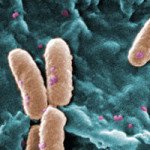 Mystery food poisoning
Mystery food poisoning
When hundreds of people started falling foul of a nasty stomach bug in October, health authorities scrambled to get a handle on the outbreak. The culprit was soon identified as the bacteria Yersinia pseudotuberculosis, but the source of the bacteria was debated in the media, with a Canterbury health official squaring off against MPI over the the non-release of ESR reports implicating certain foods, including lettuce and carrots, as potential sources of the bug. Ultimately, the source was never identified.
On the web: tinyurl.com/smc-gastro
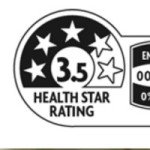 Health Food Star system
Health Food Star system
A new voluntary food labelling system was introduced in June to give Australian and New Zealand consumers greater insight in the nutritional value of their food at a glance. However the final labelling format – and its voluntary status – was a trade-off between public health academics and the grocery sector. Although there was scant evidence the star system would lead to healthier choices, experts conceded it was a step in the right direction.
On the web: tinyurl.com/smc-star
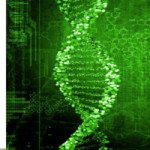 What is a GMO?
What is a GMO?
Crown Research Institute Scion and the Sustainability Council of New Zealand came to loggerheads in May over the definition of genetic modification, taking it all the way to the High Court. At the heart of the controversy was Scion’s plan to develop pine tree strains using new molecular techniques that alter the genetic code of an organism without incorporating foreign genetic material into the genome of the cell. The High Court ruled that the pine trees created would be genetically modified, but noted the current definition was “not well drafted.”
On the web: tinyurl.com/smc-gmo
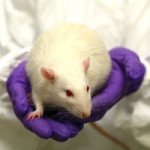 Animal testing comedown for ‘legal highs’
Animal testing comedown for ‘legal highs’
As new laws were drawn up to control, but not necessarily outlaw, ‘novel psychoactive substances’, legal highs manufacturers were asked to prove their products were safe. However when animal testing of recreational drugs was brought into the discussion, the public backlash was fast and sharp. Scientists offered conflicting views on whether animals testing was necessary to prove human safety. Ultimately the government tweaked the proposed law to rule out the use of animal data in proving safety.
On the web: tinyurl.com/smc-rats
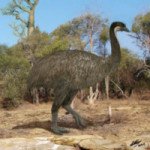 Kiwi’s bizarre relative
Kiwi’s bizarre relative
Twenty years after the fact, Expat New Zealander Prof Alan Cooper redeemed himself for hypothesising that the iconic Kiwi was originally from Australia. At a press conference in May, Prof Cooper announced that new DNA research had found the Kiwi’s closest cousin was in fact the giant, three metre tall elephant bird from Madagascar. “It’s great to finally set the record straight, as New Zealanders were shocked and dismayed to find that the national bird appeared to be an Australian immigrant,” he said.
On the web: tinyurl.com/smc-kiwi
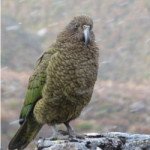 Battle for our birds
Battle for our birds
Military metaphors abounded In January when the Government launched New Zealand’s largest-ever species protection programme, increasing the use of aerial 1080 poison to control a rapidly increasing army of millions of rodents and stoats triggered by high seed production in beech forests. The first major offensive kicked off in August in Fiordland with support from numerous stakeholders, although the impact of 1080 on trout raised concern in fishing circles.
On the web: tinyurl.com/smc-birds
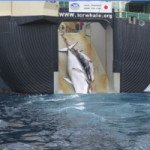 NZ, Australia take Japan to court over whaling – and win
NZ, Australia take Japan to court over whaling – and win
Australia, with the support of New Zealand, took Japan to the International Court of Justice (ICJ), claiming their whaling program was not scientific and therefore illegal. In March, the ICJ ruled that the program was not scientific, ironically because Japan were not killing enough whales. These rulings were submitted alongside a resolution to the International Whaling Commission, which Japan summarily ignored, announcing a new scientific whaling plan for 2015.
On the web: tinyurl.com/smc-whales
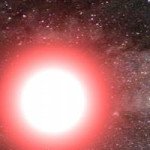 Kiwis critical in ‘rude’ exoplanet discovery
Kiwis critical in ‘rude’ exoplanet discovery
Backyard New Zealand astronomers played a key role in discovering an unusual planet that orbits only one star in a two-star ‘binary’ system, impolitely ignoring the other star. The discovery, published in leading journal Science this July, used data collected from an immense network of professional and amateur astronomers. The findings shifted our understanding of where planets might be found in the universe and what kinds of star systems could be home to worlds like ours.
On the web: tinyurl.com/smc-exo
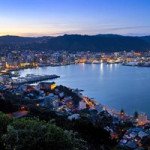 A surprise fault under Wellington harbour
A surprise fault under Wellington harbour
A previously unknown fault discovered under the Wellington Harbour became international news in October. The sneaky Aotea fault, named for its proximity to Aotea Quay, was found by NIWA marine geologists mapping the region. While the fault is thought to be capable of generating magnitude 7 earthquakes, scientists were not too worried about the risk posed by the fault and the Prime Minister rejected calls to move the capital to Auckland.
On the web: tinyurl.com/smc-fault
Our picks: Top 10 international science stories of 2014
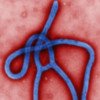 Worst ever Ebola outbreak
Worst ever Ebola outbreak
Starting as a small number of cases in West Africa, the 2014 Ebola outbreak has become the worst in history and mobilised an international effort to control the virus. The latest reports from the WHO estimate at least 17,800 suspected cases and 6,331 deaths due to the virus this year.
On the web: tinyurl.com/smc-ebola
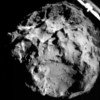 Rosetta hits a moving target
Rosetta hits a moving target
Landing a space probe on a rock 500 million km away is tough. It’s even tougher when the rock is moving at up to 135,000 km/h an hour. Nevertheless, the ten-year European Space Agency Rosetta mission successfully landed the Philae space probe on the surface of the comet 67P/Churyumov-Gerasimenko in November, completing one of the most audacious space exploits ever.
On the web: tinyurl.com/smc-comet
 Antibiotic resistance alarm
Antibiotic resistance alarm
A landmark World Health Organisation report finds antibiotic resistance is now a “major threat to public health” in every region of the world. The WHO warns that without urgent, coordinated global effort, the world is headed for a “post-antibiotic era” where people die from minor injuries and common infections.
On the web: tinyurl.com/smc-who
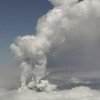 Japan’s Ontake volcanic eruption
Japan’s Ontake volcanic eruption
The September eruption of Mount Ontake, caused by a buildup of steam, became deadliest volcanic eruption in Japan in over a century. Fifty seven people were killed by the eruption which caught hikers in a cloud of dust and debris.
On the web: tinyurl.com/smc-volc
 Tamiflu backpedal
Tamiflu backpedal
In April, a damning review of data from public and private research on the antiviral drug Tamiflu, determined the benefits of the drug in pandemic situation would be minimal. The findings left numerous governments around the world feeling a bit duped for stockpiling the drug, and manufacturer Roche looking pretty naughty for keeping negative data under wraps.
on the web: tinyurl.com/smc-flu
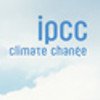 Climate change “unprecedented, unequivocal”- IPCC
Climate change “unprecedented, unequivocal”- IPCC
The fifth assessment review of the UN’s Intergovernmental Panel on Climate Change wrapped up this year, warning of “irreversible and dangerous impacts” if climate change is left unchecked. Composed of three massive reports, totaling thousands of pages drawing on the expertise of more than 800 authors, the assessment didn’t pull any punches with regard to the causes and impacts of climate change. The results of the herculean AR5 process will be central to international climate negotiations in Paris next year.
On the web: tinyurl.com/smc-ipcc
 Malaysia Airlines Flight 370 vanishes
Malaysia Airlines Flight 370 vanishes
Satellite ‘pings’, ocean patterns, hydroacoustic seabed mapping, pilot psychology and radio frequencies were all put through the media wringer in the wall to wall, 24 hour coverage that followed the disappearance of Flight 370 in March. The largest and most expensive search effort in history never determined what happen to the flight and the 239 people on board.
On the web: tinyurl.com/smc-370
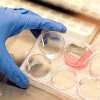 Stem cells fraud
Stem cells fraud
In January, Haruko Obokata claimed to have discovered a simple, cheap and effective technique for generating stem cells from ordinary cells – the holy grail of stem cell science. A miracle stem cell breakthrough turned into one of the biggest science scandals in recent history when Obokata’s employer, RIKEN, found her guilty of professional misconduct for fabricating her results. In a sad twist, Obokata’s supervisor, Yoshiki Sasai, took his own life in August.
On the web: tinyurl.com/smc-cells
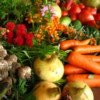 Organics takes a bite out of conventional crops
Organics takes a bite out of conventional crops
In contrast to earlier research, a July study found that organic crops may have measurable health benefits: they appear to be higher in antioxidants and lower in toxic metals than their conventionally grown counterparts. The headline grabbing study from the British Journal of Nutrition compiled and crunched results from 343 earlier studies, concluding organic crops and crop-based foods are up to 60 per cent higher in a number of key antioxidants than conventionally-grown crops.
On the web: tinyurl.com/smc-organic
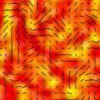 Gravitational waves hype turns to dust
Gravitational waves hype turns to dust
Preliminary results from the BICEP2 radio telescope based at the south pole indicated scientists had discovered evidence of gravitational waves, a long hypothesised phenomena described as the afterglow from the big bang. However it appear the researchers behind the discovery had jumped the gun; subsequent investigations showed that the source of the signal was not gravitational waves but more likely to be cosmic dust from our own galaxy.
On the web: tinyurl.com/smc-waves